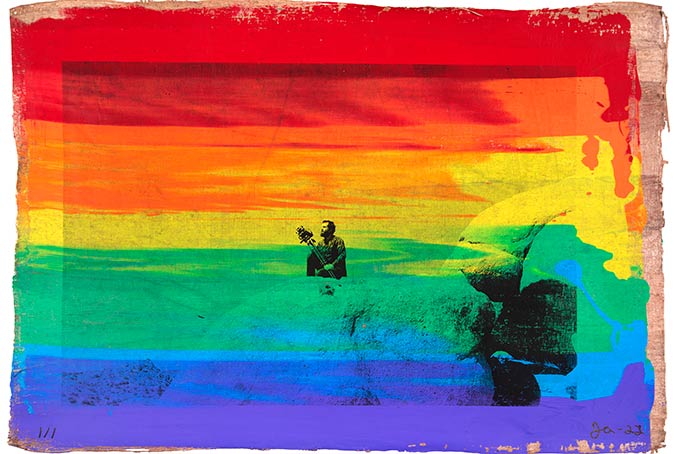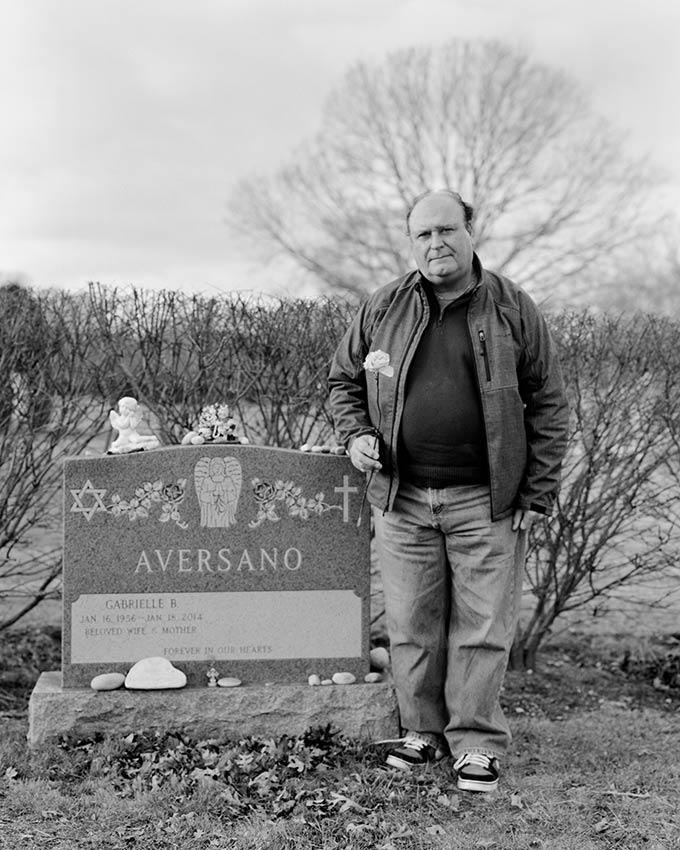In 2017, Justin Aversano was photographing the likes of A$AP Rocky for American Vogue. Today, he is a co-founder of Quantum NFT Marketplace and public-art-centric charity Save Art Space and a world-renowned NFT Artist, who’s currently planning a series of international gallery shows, featuring what he deems “hybrid photographic neo-hieroglyphs”.
Between now and then, a lot has happened for Aversano. He dove headfirst into the world of Web3 ever since his first major collection, Twin Flames, debuted on Valentine’s Day of 2021, quickly becoming the highest-selling photography NFT collection of all time. Since then, his work has sold for astronomical prices on the secondary market from Opensea to Christie’s, with one piece from Twin Flames, #49, sold via Partybid on November 23rd of 2021 for $3,781,159 USD in Ethereum at the time, making Aversano the fourth-highest-selling living photographer and the creator of one of the most expensive photographs ever sold in history behind the likes of Man Ray, Cindy Sherman, and Edward Steichen. To better understand his process and rationale, Vogue Singapore had the pleasure of joining Justin in his LA studio to discuss his career, where he is now, and what he has in store for us in 2023.

Since your first collection, you’ve focused on capturing moments that are as authentic to your subjects as they are to you. Tell us more about your creative process.
I only see one photo. That’s how I think. If you don’t get it the first time, it’s not worth the second. And if it sucks the first time, you learn from that photo, use that failure, and don’t do it again. That’s part of the work. One photo didn’t come out good because the lighting was bad. But I still use that photo because I’m not trying to cover anything up. I’m trying to be real to myself and to my process. I shoot [the subject] where we are. They choose the location. They choose their outfit. That’s how I always shoot. Even with Twin Flames, the subject chooses the location that best represents themselves, and they wear what they want to wear to be truly authentic. The fashion, I would say, is authentic. But that’s the key word here; because they’re being their true selves unstaged in the moment that we’re shooting. I’m shooting on film and I shoot the way I perceive them to create a heroic image.

What drove you to create a collection of photographs?
All my major projects [involve] a relationship with death. Twin Flames came out after reflecting on childhood trauma with my twin. My mom had a miscarriage, and I was part of that. I absorbed the twin. And that project allowed me to reconnect with the world by understanding the relationship with twins since the death of my mother and the death of my twin. With Smoke and Mirrors, I’m realising it’s more about my dad. In one of the images [in Smoke and Mirrors] he’s standing beside my mom’s grave. And this, for me, is like he’s confronting his own mortality while I’m confronting his mortality as a son after confronting the mortality of my mum already passing. That photo represents it the best. There’s life and death. There’s life in death. And so the concept of [my current] project just comes straight from how do we live with death? And how do we confront the fear of death? How do we have a better relationship with death? This is me healing through my art.

You’ve been working on various stages of your current project for several years now. Tell us more about your current iteration of Smoke and Mirrors.
I’ve been working on it since 2016. I knew I was going to do a tarot project. I knew I was going to do silkscreens. The Tarot is a great reference to old stories and how we can connect with each other and people around the world and different circumstances through the cards. The card is pulled, and that’s the card that represents that person. I don’t pick the card; the card chooses them. We do the shoot. then the subject chooses their photo to represent the project. I don’t pick. I want them to represent themselves truthfully so I leave it to fate. The new collection is printed in gold and silver: The gold represents the major arcana; there are only 22, and it’s on dark papyrus. The silver is the minor arcana. And there are 56, which totals 78 tarot cards. We’ve been creating these works for over two years now. And we’re having a solo show at Gabba Gallery on March 25th, 2023, where we’re going to be selling these prints.

The reason that they differ from the NFTs that we sold all 2021 and 2022, is that they are black ink on paper to really create that photographic effect—like a photograph on paper. Similar to how you would see a black-and-white photograph on darkroom prints. These are printed on papyrus, creating what I like to call “hybrid photographic neo-hieroglyphs.” If you think about hieroglyphs, they’re images of things from the real world. And photography is a medium that showcases the real world. What we’re doing with this collection for the rest of 2023 is there will also be the book launch of Smoke and Mirrors with a [custom] Tarot Deck, and we’ll be having a show in Berlin, another show in L.A. and a show in New York, all for this project.

You’ve always incorporated analog photography practices, but with Smoke and Mirrors, you take things to a new level of painterly abstraction with your screen prints. Would you tell us more about this direction and what you hope to achieve with this evolution in your work?
My first [photographic] silkscreen was in 2019 as an experiment, and I fell in love with how it looked. Screen printing, to me, represents the mechanism of photography because it feels like you’re inside of the camera, inside of the shutter when you’re hitting the silkscreen down. The exposure on the paper is like the exposure on film, but it’s creating the image with ink instead of light. I learned silk screening in school, but this took its own style. This is mixed media photography, silkscreen painting and differentiating from Warhol, I’m actually shooting the original content. I like to play in different mediums for different projects. So with this project, instead of doing cyanotype and colour darkroom prints like I did for Twin Flames, I’m doing black and white darkroom prints and colourful silkscreen prints. And this is [also] a way to introduce my work to traditional art collectors who aren’t into NFTs and bridge that gap. Through the physical works, I’m trying to be the bridge [between] physical with digital. I think the trend for 2023 would be more physical art in the Web3 space.
I think royalties are the most important part about NFTs. I’ve always said this. I want to utilise the good that my art can bring to the world by means of finance to people’s lives.
Your level of consideration for your collectors is impressive; your philosophy around pricing your work benefits the collectors and yourself simultaneously. Would you tell us how you recommend artists and brands to consider primary/secondary market sales?
I’m more concerned about the secondary market because I want everyone to win. It’s not just about the artists selling for 10 ETH in the primary, it’s about us selling at .21 ETH so that you could sell it for 1.2 ETH. So this can catch fire like Twin Flames did—we sold for .55 ETH, and now they’re 222 ETH. If you were an early Twin Flames collector, you were probably lucky enough to buy one of those cheap. And I reward people who invest in me early. I think royalties are the most important part about NFTs. I’ve always said this. I want to utilise the good that my art can bring to the world by means of finance to people’s lives.





